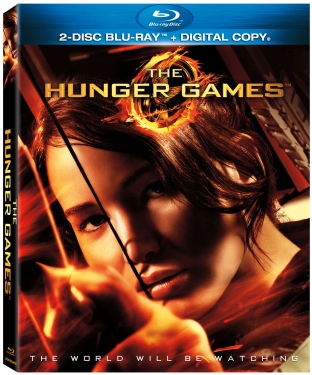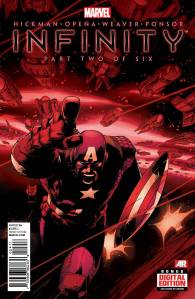
A typical Blu-Ray/digital combo pack- via Collider
In this final post of my “Clonefiles” series, I will take a brief look at the history of bundling physical and digital products together, concluding where Clonefiles fits into that narrative.
In short, bundling began with the home video industry. In early 2008, Twentieth Century Fox began to include a physical digital copy disk with select high-profile new releases. Prior to this innovation, consumers had to (illegally) rip the films from their physical disks if they desired a separate digital copy without re-purchasing the movie. Since this process tended to be laborious, most resorted to piracy.
By the end of 2008, many of the major studios and home video sellers (including Apple, Disney, Warner Bros., and Lions Gate) all followed suit. Several of the major year-end home video releases, such as The Dark Knight and Mamma Mia!, included a digital copy disk. Ostensibly, the price of the digital copy was rolled into the price of the film as a whole, only increasing the MSRP price by a few dollars (and by the time retailer discounts were factored in, those bundles cost about the same as their non-bundled peers). Essentially, the digital disks were assigned the same value as a bonus feature disk, a product that was already popular with home video buyers.
Five years later, the digital copy is now a fixture of the home video marketplace. Almost all major Blu-Ray or DVD releases include a digital copy of one type or another (for proof, just look at Amazon’s list of Blu-Ray pre-orders). The major new player in the digital video world has been Ultraviolet, a cloud-based licensing system that follows a “buy once, play anywhere” model of cross-device playback. At this moment, UV currently has over 12 million registered accounts and the support of most major studios (Disney and MGM being the exceptions).
In the print world, the first to bundle print and digital books was O’Reilly. In July 2008 (just as home video bundles were rapidly gaining traction), O’Reilly released 30 DRM-free downloadable bundles that allowed the buyer to purchase the e-book at or below cover price in one of three formats (EPUB, PDF, and Kindle-compatible Mobipocket). While the number of offered formats has changed, O’Reilly’s bundling initiative essentially remains the same in 2013. Despite its similarities to Clonefiles and Matchbook, it is hard to compare O’Reilly’s bundling with those two programs because of O’Reilly’s high prices. O’Reilly publishes high-end STM materials that often exceed $25 (even in e-book format), so a heavily-discounted O’Reilly e-book might still cost the reader $12. This essentially leaves O’Reilly out of the $2.99 debate.
In March 2010, Barnes & Noble publicly flirted with the idea of bundling their print and digital products, going with the discount model of pricing the bundled e-book. However, they never followed up that initial announcement with any actual results and never mentioned that press release again.

A Marvel Comics print/digital bundle- via Comics Alliance
The next major print/digital roll-out happened in the world of comics, when DC Comics announced in the summer of 2011 that they would begin to sell print/digital bundles of their high-profile issues. These bundles would be priced a full dollar above their non-bundled counterparts (for a $2.99 regular issue, the $3.99 bundle was a 33% price increase). Customers who bought the bundles could download their digital copy with a code that was located behind a sticker in the print comic (if one were to write down the code in the store without buying, then the comic would be defaced). Marvel Comics followed suit in March 2012, when they included a free digital copy with a purchase of their premium-priced $3.99 issues.
Despite the fact that Marvel and DC continue to publish their print/digital bundles, there has been little growth in bundled comics. Marvel and DC still limit their bundles to the highest-profile titles. No other comics companies offer print/digital bundles on their issues or graphic novels. Marvel began to offer free digital copies with their Season One graphic novels, but no other Marvel graphic novels are bundled with a digital copy.
The next publisher to enter the print/digital race was…you guessed it, Angry Robot with Clonefiles. Just a few days after AR’s initial announcement, the small press Algonquin announced their limited-time program: they offered discounts on their e-book copies if customers purchased the physical book at one of 300 Barnes & Noble locations. This offer was good for the month of July 2012, and unlike Clonefiles Algonquin has not expanded their project since then.
The current chapter of this print/digital saga, of course, is all about Amazon’s MatchBook program.
Looking over this history of bundling, Clonefiles appears to be the closest print equivalent to the movie industry’s digital model. The e-book copy comes at no extra cost or inconvenience to the customer, other than the minimal time it takes to go online and download the copy. Where Clonefiles differs from the home video model is that the digital copy is DRM-free. The digital copy disk and Ultraviolet each evolved with the intention of keeping the digital copy DRM-locked. AR takes a page from O’Reilly and eliminates all DRM-related restrictions.
In essence, AR currently offers the greatest value and the most freedom amongst all other companies (not just publishers) who bundle. This approach appears to be highly profitable for AR, but it would take insider knowledge to know whether or not AR takes a loss with each free e-book they offer.
I will conclude by echoing what I’ve implied earlier: it is too early to tell if Clonefiles can stand up as serious competition to Amazon MatchBook. When MatchBook and Clonefiles occur simultaneously, we will be able to compare how the bundled products rank in their overall book sales. For now, we only have speculation (and lots of books to read).
Next time, I will begin to analyze Angry Robot’s DRM-free stance, starting with a quick history on DRM in the book publishing world.

Pingback: A Brief History of DRM | The Robot Watcher
Pingback: FINAL POST: The Once and Future Robot | The Robot Watcher